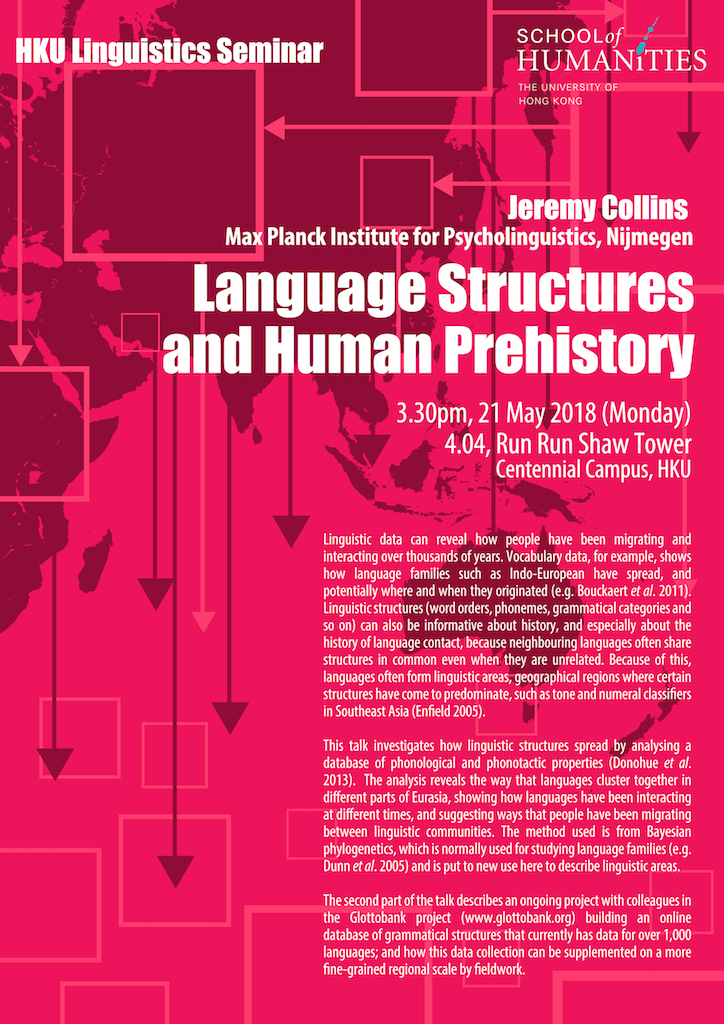
This event has passed.
Language Structures and Human Prehistory – Jeremy Collins (Max Planck Institute for Psycholinguistics, Nijmegen)
May 21, 2018 @ 3:30 pm - 5:00 pm
HKU Linguistics Seminar Series
Linguistic data can reveal how people have been migrating and interacting over thousands of years. Vocabulary data, for example, shows how language families such as Indo-European have spread, and potentially where and when they originated (e.g. Bouckaert et al. 2011). Linguistic structures (word orders, phonemes, grammatical categories and so on) can also be informative about history, and especially about the history of language contact, because neighbouring languages often share structures in common even when they are unrelated. Because of this, languages often form linguistic areas, geographical regions where certain structures have come to predominate, such as tone and numeral classifiers in Southeast Asia (Enfield 2005).
This talk investigates how linguistic structures spread by analysing a database of phonological and phonotactic properties (Donohue et al. 2013). The analysis reveals the way that languages cluster together in different parts of Eurasia, showing how languages have been interacting at different times, and suggesting ways that people have been migrating between linguistic communities. The method used is from Bayesian phylogenetics, which is normally used for studying language families (e.g. Dunn et al. 2005) and is put to new use here to describe linguistic areas.
The second part of the talk describes an ongoing project with colleagues in the Glottobank project (www.glottobank.org) building an online database of grammatical structures that currently has data for over 1,000 languages; and how this data collection can be supplemented on a more fine-grained regional scale by fieldwork.

